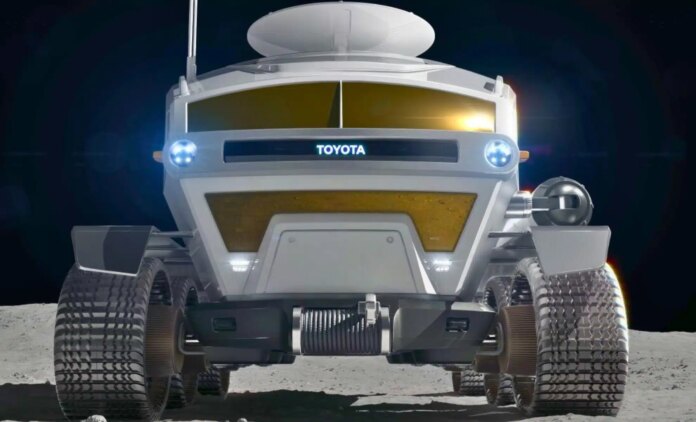NASA has tasked SpaceX, led by Elon Musk, with transporting an unlikely passenger to the moon: a Toyota Lunar Cruiser. The unpressurized rover, developed by Toyota and the Japan Aerospace Exploration Agency (JAXA), is set to play a crucial role in the upcoming Artemis program. But where’s Tesla in all this?
Toyota’s Lunar Cruiser: A Hydrogen-Powered Marvel
Forget Tesla’s futuristic designs—this rover is built for rugged lunar terrain. First unveiled in 2019, the Toyota Lunar Cruiser is engineered to tackle extreme lunar environments. The vehicle features an unpressurized cabin capable of accommodating two astronauts in full suits while carrying over 1,000 pounds (0.45 ton) of scientific equipment, tools, and cargo. The Lunar Cruiser is expected to function as a key asset for extended surface operations.
The rover’s fuel-cell technology, based on Toyota’s expertise in hydrogen-powered vehicles, ensures high efficiency and long-range capability. Designed for reliability in temperatures that swing between 120 °C (248 °F) in the sun to -173 °C (-279.4 °F) in shadow, the vehicle can traverse vast expanses of lunar terrain.
Scheduled for launch in 2032, the Lunar Cruiser aligns with Artemis’ long-term goals. It is expected to be deployed during Artemis 6, a mission targeting advanced exploration of the moon’s South Pole.
NASA’s vision for such vehicles is to “ensure a regular cadence of moon landings for continued discovery and scientific opportunity,” according to Stephen D. Creech, assistant deputy associate administrator for the Moon to Mars Program Office.
SpaceX and Blue Origin: Mission-Critical Roles
In addition to SpaceX’s assignment, NASA has tapped Blue Origin to deliver a lunar habitat. The habitat is a modular structure designed to provide shelter and life-support systems for astronauts on extended missions. “NASA assigned a pressurized rover mission for SpaceX and a lunar habitat delivery for Blue Origin,” noted Lisa Watson-Morgan, Human Landing System program manager.
SpaceX’s transport vehicle for these missions is a modified version of its Starship rocket, adapted for lunar operations. The Starship cargo variant can deliver over 100 metric tons of payload to the moon’s surface. Its pressurized compartments will ensure the safe delivery of sensitive technologies like the rover, scientific instruments, and supplies for establishing infrastructure.
Blue Origin’s habitat, meanwhile, represents NASA’s push toward sustainable lunar living. Scheduled for deployment in 2033, this structure will form part of the Artemis program’s foundation for a permanent lunar base.
The Artemis Program: Building the Future of Space Exploration
The Artemis program marks humanity’s return to the moon, aiming for a sustainable presence on its surface by the 2030s. Each Artemis mission contributes to this long-term vision:
- Artemis 1 (2022): An uncrewed test of the Orion spacecraft and Space Launch System (SLS) rocket, successfully completed.
- Artemis 2 (2025): A crewed lunar flyby that will test life-support systems and prepare for future landings.
- Artemis 3 (2026): The first crewed moon landing since Apollo 17, focusing on exploration near the lunar South Pole.
- Artemis 4-6 (2027-2032): Missions to deploy advanced technologies, including the Lunar Gateway, rover, and habitat modules.
The lunar South Pole is of strategic importance due to its water-ice reserves, vital for supporting life and creating rocket fuel through hydrogen extraction. The Artemis missions are a testbed for the ultimate goal: sending humans to Mars in the 2040s.
 Tech News
Tech News Tech Reviews
Tech Reviews Smartphones & Accessories
Smartphones & Accessories Gaming Consoles & Accessories
Gaming Consoles & Accessories Smartwatches & Wearables
Smartwatches & Wearables Audio Devices
Audio Devices Cameras and Photography
Cameras and Photography Laptops & Tablets
Laptops & Tablets Computer Peripherals
Computer Peripherals Televisions and Home Entertainment
Televisions and Home Entertainment Smart Home Devices
Smart Home Devices Home Appliances
Home Appliances


